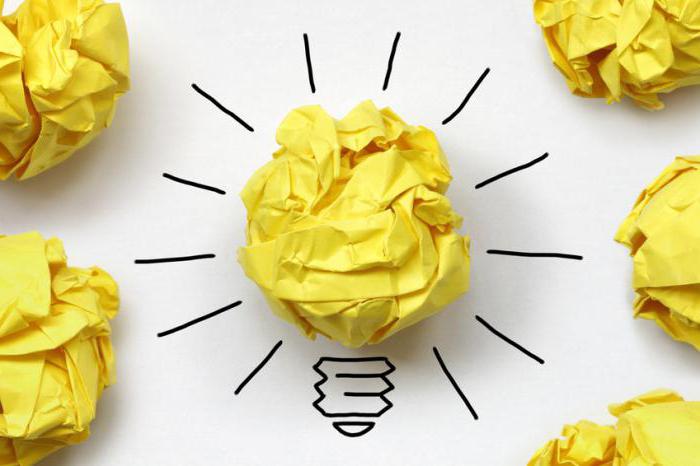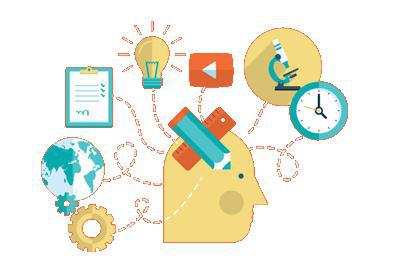A new product (work or service) is a product that has undergone technological changes in the past three years to varying degrees; its composition depends on the type of innovation.
Definition of Innovation
Thus, the definition of an innovative product includes all new products (first developed and introduced, or undergone major changes in production technology) or undergone improvement. Hence, radical product innovations are invested in the concept of “new product”, significant technological changes are incremental innovation, and product improvement is process innovation.

An innovative product is a product obtained as a result of new (including fundamentally new) technologies or in combination with existing ones. For this type of product should be completely new or significantly different from previously existing products:
- area of use;
- operating characteristics;
- signs;
- structural performance;
- the composition of the components and materials used.
Examples of radical type innovations
Innovations become radical when replacing an existing product with a new product, just as these products once replaced the previous ones. But units of "super-new" products are developing so much that they can completely replace the entire market in which they are grown.
As an example, at one time there was a radical innovative product - the first microprocessor, video cassette recorder, digital camera. Since the production used exclusively the latest technology.
The first portable cassette player combined to a greater extent the principle of building a tape recorder and miniature ear loudspeakers. In those days, these were common household goods. Related to innovation of the second type. This product has never been released before.

The first portable type mp3 player that combines current software standards with a small hard drive. This product was new, since in its manufacture there was a combination of existing technologies. It turned out that this product belongs to the type of useful goods that have no analogues, which was the reason for their popularity.
Incremental Innovation Examples
Gradual innovation changes are minor improvements to existing products and business processes on the market. A plus of this type of innovation is the refinement of existing areas of activity that were created by radical changes. More competitive products are emerging. In these cases, a process or product arises that is more advanced than its predecessor in terms of reliability, quality, applicability or effect of the application. Incremental innovations are usually divided into improving innovations, not key rationalizations and modifications innovations.
Changes in components, materials, as well as other characteristics that increase product efficiency, are significant technological changes in existing products. So an innovative incremental product in the manufacture of automobiles is an anti-lock braking system, a navigation system and other improvements that consist of partial conversions or additions to many integrated technical subsystems.
“Breathable” fabrics in the clothing industry are another example of incremental product innovation related to the use of a new type of material that enhances product performance.
Process Innovation Examples
Products that have undergone improvements - a product based on the implementation of the latest or substantially improved production methods, which involve the use of new equipment, methods of organizing development and manufacturing, or all processes in combination. Examples of new production methods are the start of production of new automated equipment in the production hall or the launch of a design system to develop products using computer technology. Most often, these processes are related to the goods already being produced at the company.
 The market is also subject to process changes. Here they highlight an innovative product, new for the global marketplace, new for sales market given company, but not necessarily new to the market as a whole. For example, products used in the restaurant business are now positioned as household goods.
The market is also subject to process changes. Here they highlight an innovative product, new for the global marketplace, new for sales market given company, but not necessarily new to the market as a whole. For example, products used in the restaurant business are now positioned as household goods.
Innovative services include such works, methods of use or characteristics that are fundamentally new or of high quality, or technologically advanced to a large extent.
Business Innovation
In any business, leading companies prefer to invest in innovation in order to remain successful in the market. In today's market situation, global competition is forcing company leaders to seek new sources of income. Additional income can be derived from innovations in the production and sale of existing products, as well as by developing an innovative product that can satisfy unaccounted wishes of customers, or make it better and more economical.

Painstaking work with clients is ongoing, during which new opportunities for growth are identified, ways to overcome problems, expediency and profitability are identified.
A new product is invented and brought to the market when critical profit requirements are sufficiently deeply and accurately defined. In this case, the management of the departments for the development and promotion of products clearly, in accordance with the budget, calculates and directs funds for the design, purchase and use of production facilities, marketing and sales.
Model "NTVB"
Many innovative services and products have been radically improved thanks to the competent combination of technical, financial and consumer sectors.
Launching a successful innovation is not easy, but to simplify the perception, the leading global marketing and management research consulting company Lucintel has developed a model consisting of 4 areas that must be researched without fail. This work is called, the purpose of which is to answer the question of how to bring an innovative product to the market and get maximum profit - "NTVB" analysis. Thanks to this market technique, a high degree of return on investment is ensured and profit is increased.
 The analysis includes the following four steps:
The analysis includes the following four steps:
- customer needs are analyzed;
- market trends are analyzed;
- a comparative analysis is carried out;
- an analysis of the benefits.
The company offers in each of these areas a specific procedure and set of rules to increase profits.
The first step of the model
First of all, the need and market dissatisfaction are investigated. The study is determined by the need to identify and maximally understand the needs, the reasons for their importance, as well as the documentation of economic, market, competitive and technical factors that affect the possible outcomes of events.

This section raises the main questions and looks for answers to them through research, both field and desk. Both methods are used, and it is their combination that gives a fruitful analysis result.Painstaking work requiring a serious approach and capable of fundamentally changing the idea of innovation in the case of deviations of conclusions from preliminary hypotheses regarding the goals of the latest product. And also definitions of such assumptions as whether useful goods will be obtained in the course of innovation, whether they will be in demand, and whether they will bring the planned level of profit that investors expect when allocating funds for their creation.
Goals of the first step of the model
The main objectives of this section of the model include:
- Market requirements, questions such as: are innovations needed by customers? For what reason can the current product manufacturing process no longer be used? How to improve the product to attract consumers? What are the expectations for innovation? Who is the potential consumer of an innovative product?
- Functional requirements: material and technical requirements for the product. These include the following characteristics: performance, weight, properties, flexibility, etc.
- Requirements of the economy: at what stage of the life cycle the innovation will be, and hence, what profit can be expected from it, as well as savings in the cost of materials and production.
- Competitors' requirements, questions stand out: which competitors with similar or similar innovations exist? What are their capabilities and successes? What is the threat of their existence for this innovation.
The second step of the model
During the analysis of trends, trends in the field of innovations are studied in terms of the degree of satisfaction, as well as compliance with the desires of consumers. What industries are being captured by players to meet their needs? What are the trends in the development of materials in terms of price and performance. Do these technologies already exist to meet the needs of market participants? Market trends that can support decision making and development? What trends can hinder the usefulness of an innovation product?
 Over a long period of time, overall productivity improves thanks to sustained innovation in the industry to meet the growing needs of customers. When there is a gap between the desires of the consumer and the actual offer, it is at this stage that an opportunity arises for innovations that can satisfy these needs.
Over a long period of time, overall productivity improves thanks to sustained innovation in the industry to meet the growing needs of customers. When there is a gap between the desires of the consumer and the actual offer, it is at this stage that an opportunity arises for innovations that can satisfy these needs.
When a decision is made to introduce a new product, the new player is given the opportunity to gain access to the “gaps” market to satisfy the unmet needs of market participants.
The third and fourth step of the model
During the third step of the model, an assessment is made of the cost as well as the profitability of the innovations made (all the way from the manufacturer to the final buyer is taken into account). A detailed analysis of all costs during the service life of the product is carried out - the expected life of the innovations is determined, their value in comparison with the current production.
In the fourth stage, the benefits of innovation are evaluated. It is determined how innovations are better than existing technologies and solutions available on the market. Critical criteria and factors are identified that must be observed without fail in order to understand whether the innovation is successful.






